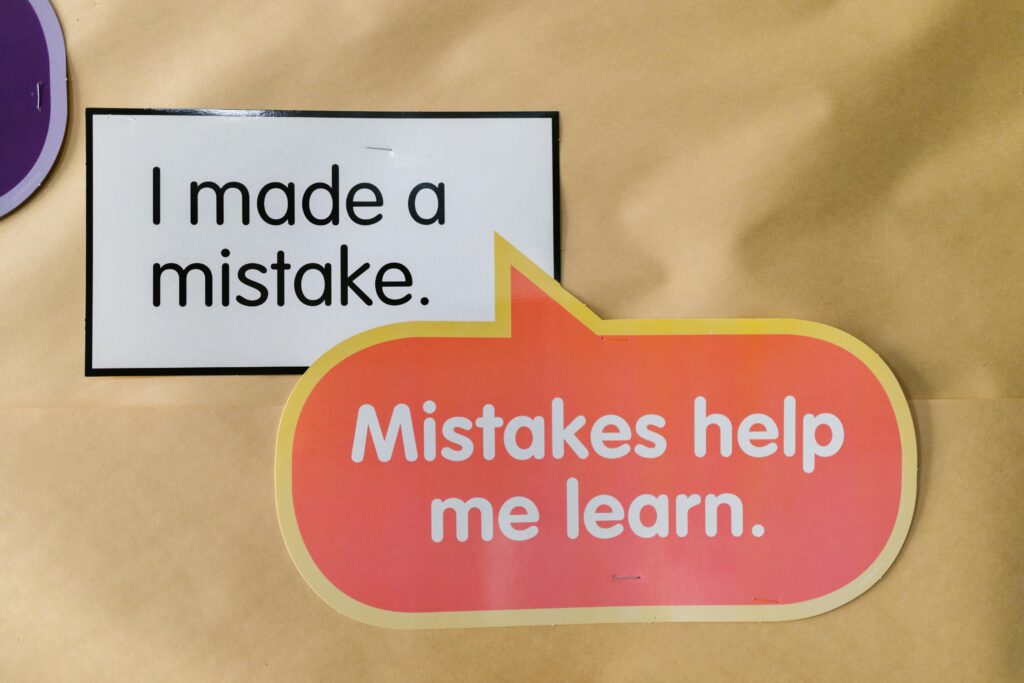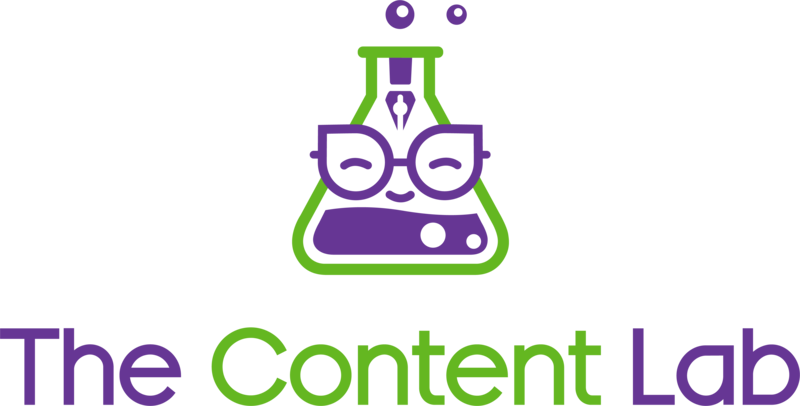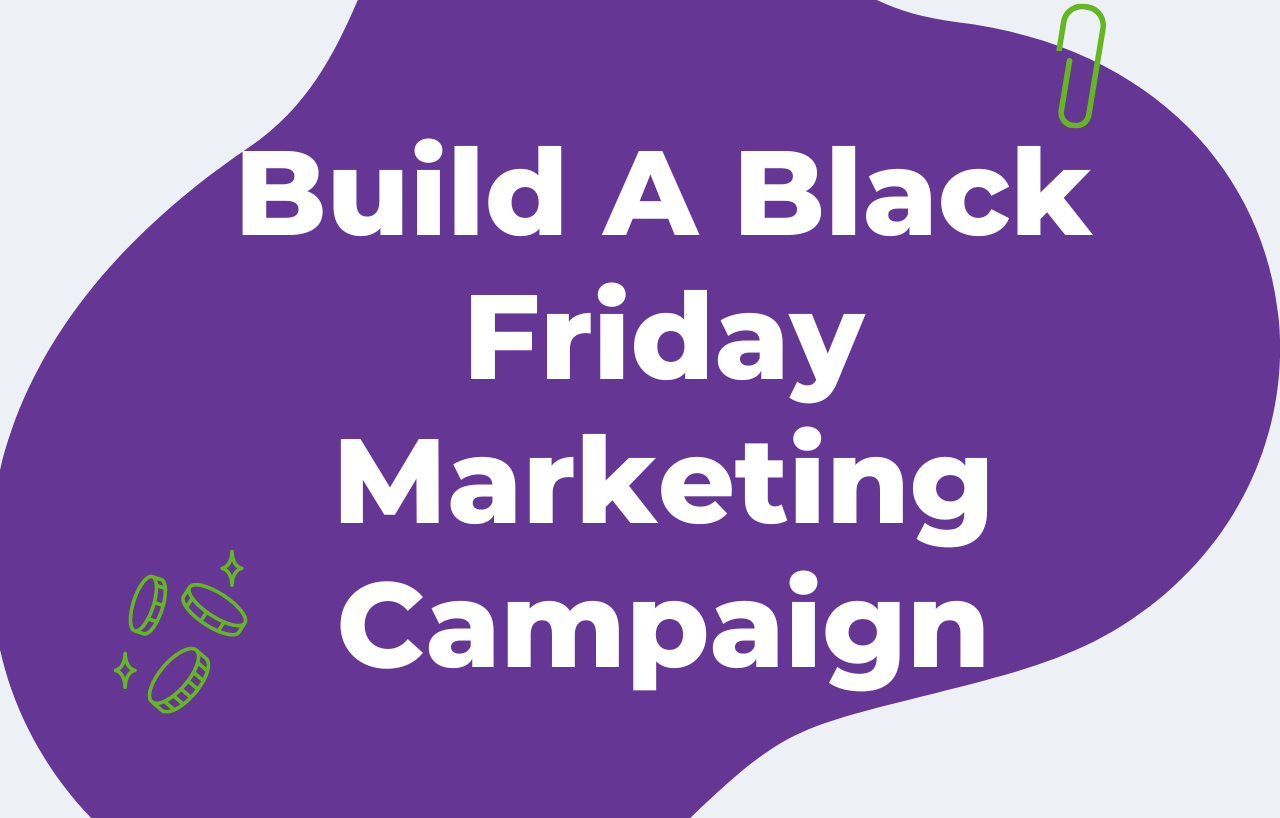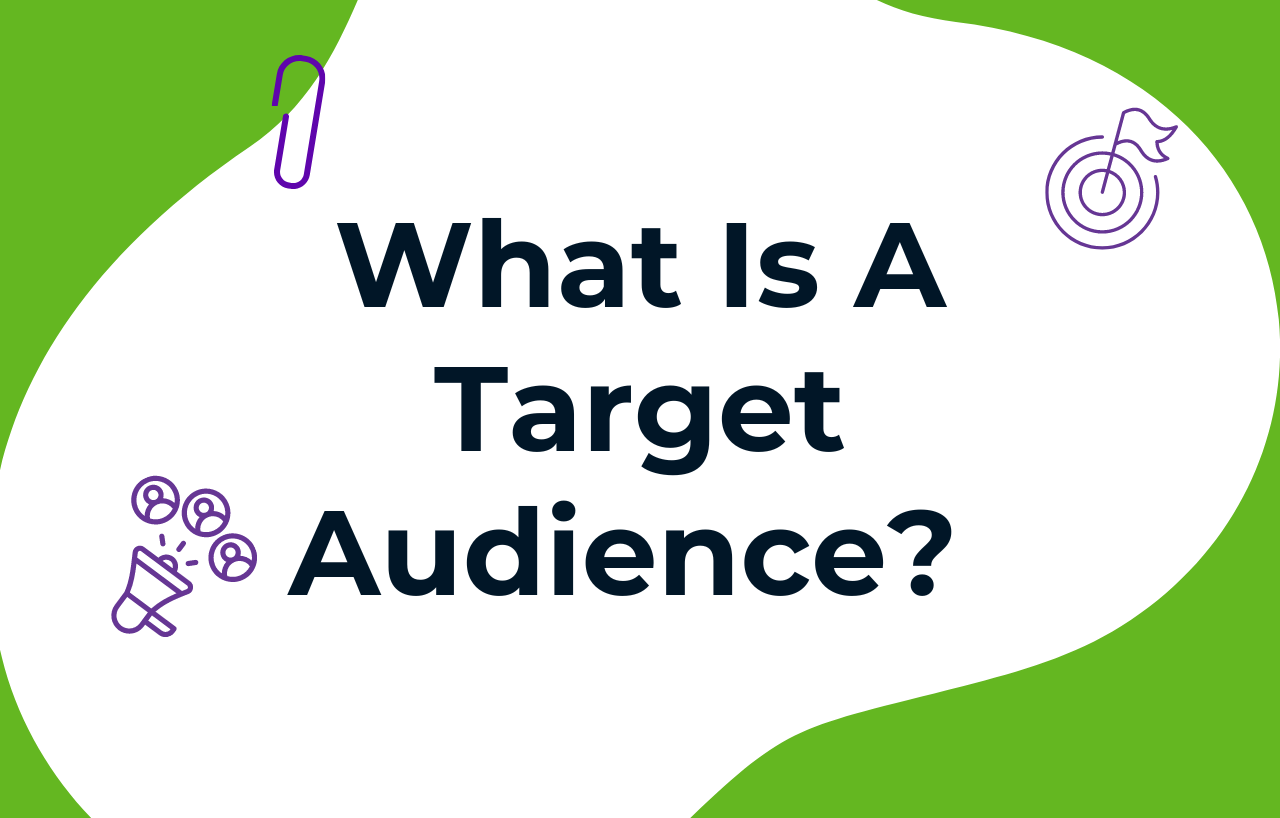Note: All the content in this blog post was written by a real life writer and editor. No AI was used in the creation of this blog post.
We’re human. We all make mistakes. Heck, believe it or not, sometimes even non-humans make them.
The bad news is, copywriting mistakes can harm your agency’s – or your client’s – business.
The good news is that while copywriting mistakes are pretty much inevitable, their negative impacts don’t have to be.
Remember our blog on “Website Copywriting Tips & 8 Common Mistakes To Avoid” by our very own word-wielder Ciara Meagher? I’m here to follow up on her brilliant take – from an editor’s perspective!
So, stick around, and I’ll explain why copywriting mistakes matter. Then, I’ll walk you through the 12 most common copywriting mistakes you might be making and give you some tips to correct or avoid them.
Disclaimer: This list is thorough but far from exhaustive. And as with most things, all dos and don’ts are only guidelines. There are exceptions to every rule (especially when it comes to copywriting).
Okay, ready to learn how to take your copy from ‘uh-oh’ to ‘oh yeah’ with your friendly neighbourhood editor? Me too! Let’s go.
Why Copywriting Mistakes Matter
Look, these ‘common copywriting mistakes’ are just that: common. They happen all the time – especially if capital-C Copywriter isn’t your or your client’s primary job title. And they’re just a couple of typos. So what?
Well, I certainly won’t judge you for misspelling the occasional word, misplacing some parentheses, or slipping in the odd cliché. But your audience of potential customers might.
Making mistakes like these can lead to misunderstandings and costly corrections. What’s worse, they can damage your agency’s credibility and wreak havoc on your clients’ reputations.

And that’s what really matters – even when, in the grand scheme of things, a few errors here and there kinda don’t.
So, with that in mind, let’s look at some common mistakes that AI, amateur, and even professional copywriters can make from time to time – and how to fix them.
Copywriting Mistake #1: Neglecting your target audience
I know you and your clients are great. YOU know you and your clients are great. It’s only natural to want your audience to know how great you are, too. Well, it might sound counterintuitive, but making yourself, your business, and your products and services the main character of the story is a big no-no.
Similarly, aiming your content at a broad audience to reach as many people as possible might seem like the ideal strategy. Makes sense, right? But your products and services aren’t for everyone, so your content doesn’t need to reach everyone.

Do This Instead:
Before you start writing a blog post, landing page, or email campaign, do thorough research on your ideal buyer persona. Then, keep your target audience in the spotlight and speak directly to them. Instead of “I”, “me”, and “my”, use “you” and “your” to keep the focus on the reader. Remember: they’re the hero of the story – you guide the reader on the path to success!
And not just any reader. Get specific! Remember, the better you understand who your ideal audience is, what they need, and what their pain points are, the more effectively you can reach potential customers with the content you create – and make a real emotional connection.
Copywriting Mistake #2: Tone-deafness
Finding the right tone to use with your audience is a crucial step in getting to know them. It turns out, attracting the right audience gets a whole lot harder if your copy strikes the wrong tone.
I mean, you wouldn’t speak to your lawyer in the same tone you’d speak to your dog, would you? (“Who’s a good boy? YOU are! YOU are!”) I hope not.
The same is true when you’re writing with a particular audience – or audience segment – in mind. Sometimes you need a more formal, sophisticated tone. Other times, a fun and quirky voice – or even a bold and cheeky one – will resonate better with your audience.
If your tone doesn’t align with your audience, they may ditch your content and seek out someone who rings the right bell for them.
Do This Instead:
The voice and tone you and your clients use in your copywriting should align with both your brand identity and your ideal buyer personas.
When you’re writing, ask yourself whether you would greet your reader with a “Hello”, a “Hi”, or a “Howdy!” Are there “numerous”, “many”, or “a whole heap of” benefits your product or service can offer them?
Use a tone of voice that truly reflects your brand and speaks to your ideal customers. The more they can relate to your brand’s tone, the more likely they’ll be to stick around to learn more – and eventually, convert!

Copywriting Mistake #3: Overloading industry jargon
Knowing your industry well enough to speak its language takes years of hard work and dedication. You and your clients have put in the necessary time and effort, and you know every term in the book. You’re experts! Congrats!
That expertise is what gets your audience’s attention. It’s what people need, what they’re searching for. But chances are, most of your readers won’t be familiar with the technical jargon of your field.
So, whether your tone is formal or informal, if you load up your copy with too much jargon, too many technical terms, and complicated industry language, the audience will likely lose interest. What’s worse, they’ll choose to work with someone they can understand – and feel understood by – instead.

Do This Instead:
Jargon is often related to the features of the products or services you and your clients have on offer. Instead, highlight the benefits your target audience will enjoy if they choose to work with you.
Take the time to learn about the problem your audience is trying to solve, and focus your copywriting efforts on how you can help them solve it. When you demonstrate this depth of understanding, they’ll be more comfortable trusting you or your clients.
Copywriting Mistake #4: Using unnecessary, complex language
Technical terms aren’t the only things that might be clogging up your copy. If used excessively, superfluous words, extraneous phrases, and complex syntactic patterns could provoke potential customers to discontinue their consumption of your well-intentioned content.

Simply put, complex language is a total turn-off in copywriting, and your readers are gonna bounce. (See what I did there?)

You might think a large word count and an advanced vocabulary will boost your credibility as an expert. But, reports show that the average literacy level in the US is pretty basic. And in the UK, 16% of adults score at the lowest level of literacy.
Readability matters. Using long, unnecessary words, complicated grammar, and too many adjectives and adverbs can rob your copy of clarity, costing you clicks and harming your conversion rates.
Do This Instead:
Make every effort to meet your audience at their literacy level and speak their language. To do this, I recommend:
- Trimming out unnecessary words to tighten your copy and keep it concise
- Limiting your modifiers (i.e., adjectives and adverbs)
- Cutting unhelpful intensifiers (e.g., “really”, “very”, “so”, “too”, etc.)
Simplifying your words and phrases as much as your tone will allow (e.g., “ask” instead of “enquire”, “give” instead of “provide”, and “help” instead of “assist”)
Copywriting Mistake #5: Using long sentences
Even folks with high literacy skills can get lost in a long sentence.
Like complex language and industry jargon, long, complicated sentences can distract, confuse, and frustrate your readers – sometimes enough to drive them away… toward your competitors.
Even the sentence I just wrote is pretty long! If you’re still with me, let’s see what we could do to tighten things up a bit…
Do This Instead:
Aim to keep most of your sentences short and sweet – ideally, an average between 15 and 20 words or less.
If your sentences run longer than that, try breaking them down into two – or even three – separate sentences. Take that long one we noticed in the ‘complex language’ mistake section, for example. I’ve left it long to illustrate this tip as an example. If I were editing that big ol’ sentence, I’d break it up like this:
“Like complex language and industry jargon, long, complicated sentences can distract, confuse, and frustrate your reader. Frustrate them enough, and you risk driving them away – toward your competitors.”
See? Just like that, one too-long sentence breaks down into two just-right ones!

Copywriting Mistake #6: Lack of variation
So. You’ve simplified your language. Your sentences are concise. Your tone is direct.
Now the problem is – just like the lines I’ve just written – it’s all sounding a bit…the same. Same length, same structure, same rhythm and tone.
Lack of variation is a common mistake in copywriting. While you might avoid some of the previous pitfalls, language that lacks variety also lacks character and personality. Short, blunt, repetitive lines don’t highlight your unique brand personality. Worse, they’ll likely bore your audience.
Do This Instead:
Add a little…spice! If your copy starts to feel stilted or robotic, try these tips to shake things up and put a little life back into your writing:
- Vary the line length: A true groove is a little asymmetrical. Break up a series of longer sentences with a short one or two – and vice versa. Heck, throw in a fragment or two if you can get away with it! Couldn’t hurt. 😉
- Shake up the structure: Most of your sentences will have a simple Subject-Verb-Object structure – and that’s great! But every once in a while, try rearranging your clauses for an interesting variation. (Take the previous sentence as an example. “Try rearranging your clauses for an interesting variation every once in a while” would have been technically correct. But flipping the phrases adds a little bit of flavour to the mix. Just don’t overdo it! Scrambling the syntax too much can cause confusion.)
- Switch up the format: Don’t forget, there are plenty of other ways to present information in your copy. Consider formatting some of your text into infographics, charts, or bullet points (like this one). This adds variety and interest to the page and makes it more accessible. Plus, visual elements like video content, charts, and graphics are easy to share on social media platforms! (More on formatting in Mistake #10!)
Copywriting Mistake #7: Leaning on cliché

Using familiar, clever turns of phrase can add character to your copy, helping you connect with your reader and keep people interested.
In fact, these phrases are often used in place of more complex or technical language for better clarity and readability.
But sometimes these once-powerful phrases get used and reused so often that they start to lose their impact or meaning.
Once upon a time, to “think outside the box” was a new and impactful way to encourage creativity.
But by now, I’ve seen it so many times that instead of piquing my interest, it completely falls flat. My eyes tend to gloss over it on the page and move on to something with a deeper meaning.
Overused phrases like that – or “an ace up your sleeve” or “banging your head against a brick wall” or “cat’s got your tongue” – have crossed over into cliché.
Letting too many slip into your work can weaken your impact, and your audience may bounce.
Do This Instead:
Common words and phrases are fine in moderation. In fact, as mentioned, they really can help you connect with your ideal audience.
But if you find yourself leaning too heavily on “run-of-the-mill”, “dime-a-dozen” phrases, try revamping them to keep them fresh and better serve your copy. Try combining phrases to surprise the reader, or contradict a familiar phrase to give it new life (see Science Daily’s “You Can Teach An Old Dog New Tricks — With The Right Diet”!).
If all else fails, you’ll just have to suck it up and cut them out completely.
Note: Cliché phrases aren’t the only ones to watch out for. As we know, some agencies are now generating content using Artificial Intelligence.
AI copywriting tools like ChatGPT have processed immense amounts of human-written material and have learned to mimic it by using the most common copywriting structures, language, and phrases.
While not necessarily cliché, if AI tools are using these words and phrases, they’re probably too common to be effective anymore. In fact, some of these phrases are now strongly associated with “sounding AI”.
If you want your copy to feel consistently fresh and human, do a little research.
Figure out which words and phrases that have gone to the bots, and try to avoid using – or at least overusing – them yourself. (More on AI in the Mistake #12!)

Copywriting Mistake #8: Ignoring inconsistencies
As mentioned, variety is the spice your copy needs to keep it interesting. Just don’t sacrifice consistency in the name of variation! Whether it’s your brand voice, your content’s tone, or your text’s formatting, consistency is key.
By now, many of us know the importance of a consistent brand identity across various platforms, from our websites and blogs to our LinkedIn profiles and social media accounts. Presenting a cohesive brand voice fosters trust and encourages loyalty amongst our readers.
The same is true on a micro-level. It might not seem like a big deal (and hey, maybe it’s not in the grand scheme of things!). But, inconsistencies – like switching back and forth between “and” and “&” or using “with” and “w/” interchangeably throughout your text – can confuse your readers, distracting them from what you’re actually trying to say.
Even something as subtle as promising “12 Common Copywriting Mistakes” in your blog’s title but only delivering 11 in the body of the post can sow the seed of doubt in your audience.
Do This Instead:
Read back through your draft (or better yet, get a professional copy editor to take a look!). Make sure your brand’s tone and personality are clear and consistent all the way through.
Then, double check the consistency of things like these:
- And vs. &
- With vs. W/
- California vs. CA
- Twelve vs. 12
- €6.00 vs. €6
- Vs. vs. Vs (Whoa. See how confusing that is?)
Copywriting Mistake #9: Using passive voice (instead of active voice)

Using the passive voice is a mistake made by countless well-meaning writers. But by using the passive voice instead of the active voice, their content is robbed of a sense of immediacy. Sometimes the quality of the writing or the confidence of the writer can be called into question when the passive voice is used. Readers may be confused by passive phrasing, and at the end of the day, the purpose of the copy won’t have been served.
But what even is passive voice, anyway? I’ll give you a clue: all of the sentences in the previous paragraph are at least partially passive.
In the passive voice, the action (verb) isn’t being performed by the subject of the sentence. In the active voice, the subject performs the action in the sentence.
Spot the difference? No? Let’s take a closer look…
Do This Instead:
The active voice is clearer, more confident, and more engaging to the reader. Usually, the key is in the verb and the order of the words in the sentence. Let’s go back to that first paragraph in this section, and I’ll show you how to fix them:
“Using the passive voice is a mistake made by countless well-meaning writers.” To make this sentence active, we could edit it to say: “Countless well-meaning writers make the mistake of using the passive voice.”
“But by using the passive voice instead of the active voice, their content is robbed of a sense of immediacy.” To make this one more active, we could say: “Using the passive voice instead of the active voice robs their content of a sense of immediacy.”
Starting to make sense?
Here’s another one:
“Sometimes even the quality of the writing or the confidence of the writer can be called into question when the passive voice is used.” To make this active, we could say: “Sometimes we may even question the quality of the writing or the confidence of the writer when they use the passive voice”
“Readers may be confused by passive phrasing, and at the end of the day, the purpose of the copy won’t have been served.” Two passive clauses this time! Let’s make them active: “Passive phrasing may confuse readers, and at the end of the day, it won’t serve the purpose of the copy.”
Bonus round!
“In the passive voice, the action (verb) isn’t being performed by the subject of the sentence.” OMG, defining passive voice IN the passive voice?
Meta.
Well, you know the drill:
“In the passive voice, the subject of the sentence isn’t performing the action (verb).”
…well, now it is. 😀
Copywriting Mistake #10: Forgetting about formatting
You want your copywriting to grab attention and hold it – for the right reasons. Weak headlines (or no headings or subheadings at all) and haphazard formatting can catch the reader’s eye and keep them from reading more deeply.
The last thing you want is for bad formatting to distract your audience from the message you’re trying to convey.
So, what does bad formatting look like?
- Weak (or lack of) headlines and subheads, or headings that blend in with the rest of the text
- Dense walls of text with little-to-no white space or other elements to break it up
- Inconsistent fonts, with styles, sizes, and colours all over the map, creating chaos for the eye
Do This Instead:
- Separate lengthy copy into sections, clearly marking each one with engaging, consistently-formatted headings and subheadings
- Break up walls of text into short paragraphs, leaving some white space in between as a little breather for the eyes
- Boil down bits of your text into bullet lists, charts, or infographics to keep things interesting
- Choose easy-to-read fonts in accessible sizes and colours (stick to 1-2 fonts to keep things clear and readable on the page or screen)

Copywriting Mistake #11: Spelling mistakes and grammatical errors
We all make mistakes. In fact, on average, we make 8 mistakes for every 100 words we type. The real pros try to keep it to 3 mistakes or less.
3 ain’t bad! But it also ain’t 0.
If left unchecked, spelling mistakes and grammatical errors could spell disaster for your brand’s credibility, reputation, and success.
Sometimes mistakes like these can be more than embarrassing, leading to costly slip-ups or massive misunderstandings.
Do This Instead:
Keeping your copy as clean and error-free as possible reduces the risk of confusion or miscommunication and positions you and your clients as the industry professionals you are.
It’s worth taking the time to edit and proofread your copy. Whenever possible, take a break between drafting and editing your copy. Come back to it with fresh eyes, ready to catch any errors.
If you can, get a colleague or professional editor to look at your work before you launch to make sure it’s in peak, publishable shape.
Copywriting Mistake #12: Letting AI do it all

Look, I know it’s tempting to crack open an AI copywriting tool, punch in a few commands and keywords, sit back, and let it do all the heavy lifting for you. Maybe you even know other agents or content creators who rely on AI to write copy for them.
And as a human copy editor, part of a team of human copywriters, I might be slightly biased. But hear me out.
AI’s gotten pretty good at mimicking human writing. But it lacks depth of feeling, nuanced social and cultural understanding, and a capacity for authentic branding. Human writers have perfected all these over time.
Plus, as we saw in the cliché section, AI tools learn from the common structures, words, and phrases in the human-generated content they’ve been given to learn from. Even when it avoids flat-out plagiarism, AI-written copy is derivative by default. You and your clients have genuine intelligence – and you deserve fresh, relevant copy that’s uniquely human and uniquely you.
And AI just can’t do that.
Do This Instead:
Resist the temptation to take the AI shortcut.
Writing our own copy takes time and energy, and bringing a professional copywriter on board will cost a little coin and control.
But the positive results you’ll get from expertly-crafted by-humans-for-humans content will be well worth it.
Final Thoughts
And there you have it! 12 common copywriting mistakes and tips to help you fix (or avoid) them from your friendly neighbourhood copy editor here at The Content Lab.
If you’ve made it this far, you’ve learned the importance of placing your audience front and centre. You know how to avoid complex jargon and complicated language, keeping your sentences clear and concise.
We’ve demystified the passive voice and effective formatting. And we’ve explored ways to avoid cliché and eliminate errors and inconsistencies from our writing.
Finally, we’ve Just Said No to letting the writing robots have all the fun!
Copywriting Woes? Make No Mistake: The Content Lab Can Help You Fix ’Em!
With over a decade of industry experience, we’ve seen it all at The Content Lab.
So, if you or your clients are struggling to write, optimise, or edit high-quality copy that converts, don’t worry. We have processes in place and professional writers and editors ready to spring into action!
From compelling copy and search engine optimisation to content strategy and expert editing – whatever you need, just reach out. We’re ready to help!




